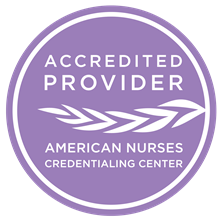The attorney used words like fabulous, excellent, and fantastic. These were not words I was used to hearing in nursing.
One Case Was All It Took to Create My Confident Legal Nurse Consulting Career
by Lisa Contreras, RN, BSN, CLNC

My most memorable case was my first case. Before becoming a Certified Legal Nurse Consultant, I was searching for a way to use my years of long term care and skilled nursing experience. I had my bachelor’s in nursing and had held positions ranging from staff nurse to director of nursing services. I was the director of a 34-bed skilled nursing facility, and I knew retirement was still more than a few years away. After years of stress and long hours I was interested in pursuing a home-based business. I had some vague ideas about consulting for nursing homes or maybe teaching.
I Went for It and Never Looked Back
My most memorable case was for an attorney who was representing an elderly patient against an acute medical facility. The plaintiff had sustained pressure ulcers to her heels after a routine hip replacement. The attorney asked me to review the medical records and provide a verbal opinion as an expert. I eagerly dug into the medical records. Keeping in mind the Institute’s guidelines for providing expert witness services, I used the screening method I had learned and the form provided in the Core Curriculum for Legal Nurse Consulting® textbook.
Prior to her hospital admission, the patient lived at home with supervision, performed activities of daily living and suffered from progressively worsening pain to her right hip with difficulty ambulating. Diagnoses were Parkinson’s, bilateral hip osteoarthritis, degenerative disk disease, cerebral vascular disease, hypertension, cardiomegaly, congestive heart failure and hypercholesterolemia.
Based on my review of the medical records, I determined that the hospital staff had failed to meet the standards of care for preventing pressure ulcers.
- The surgeon failed to appropriately assess the patient for risks and to provide an appropriate plan of care.
- The nursing staff failed to assess risks such as immobility due to pain.
- The nurses failed to develop a nursing care plan for preventing pressure ulcers.
- The nurses failed to document turning and positioning the patient at least every two hours, which is the standard of care for preventing pressure ulcers.
- The nurses failed to document assessment of the patient’s heels, which are areas at risk for pressure ulcers.
- The nurses failed to implement pressure-relieving devices which should have been in place to reduce the risk of complications due to immobility.
- Upon transfer to a rehabilitation facility, the discharge nurse failed to document assessment regarding skin integrity or the presence of pressure ulcers on her heels.
- The nurses failed to address pain management consistently, especially while the patient was in bed at night.
- The post anesthesia nursing record documented “unable to palpate right dorsal pedal pulse, but audible per Dop.” Dorsal pedal pulses were not assessed further.
- With average meal intakes below 75% and a recent blood transfusion, the patient required additional interventions to support her nutritional status. The patient also required supervision with meals due to swallowing difficulties. She was to also have honey-thickened liquids. Yet no nursing care plan was instituted to address these issues.
Deviations from the Standard of Care Resulted in a 15-Month Recovery Process
When the patient arrived at the rehab facility, the admitting nurse performed a skin assessment and documented the presence of bilateral heel pressure ulcers, Stage II on the right and Stage I on the left. Documentation on the skin assessment body diagram stated, “appears blue-blood blisters.” This evaluation was confirmed by the admitting physician. Thereafter, a care plan was initiated to manage the heel ulcers, including heel floaters and a zone air bed.
The patient was also assessed to require dysphagia therapy, with an evaluation that resulted in a plan of care including special diet texture and staff interventions. The patient was placed on a minced soft diet with honey-thickened liquids. Additional interventions included one-on-one supervision with meals, chin tuck, half-teaspoon of food per swallow with reminders to chew and swallow.
Due to the heel ulcers’ failure to heal, the patient suffered from a protracted recovery despite interdisciplinary interventions. Therapy involved application of a wound vacuum for three months. Complications included pain and difficulty sleeping at night, as well as decreased mobility.
The hospital’s failure to meet the standards of care resulted in bilateral heel ulcers in an ambulatory patient. The outcome was a lengthy recovery – the pressure ulcers took 15 months to heal. The patient required a wound vacuum and was unable to return home as planned. The expense of residing in a care home instead of living with family and the pain and suffering the patient endured caused the family to seek a lawsuit against the facility.
My Professional Opinion and Written CLNC® Report Thrilled My Attorney-Client
I carefully organized my thoughts as I prepared to call my attorney-client with a brief summary. I was a little nervous. I knew my presentation had to impress this potential lifelong client. Everything I had learned from the CLNC® Certification Program and the CLNC® Mentors came to mind. I envisioned myself confidently and professionally speaking with my attorney-client and receiving a positive response.
I couldn’t have imagined the call going any better than it did. I gave a quick overview of my impression of the case, referring to relevant facts and missing items in the documentation. The attorney was thrilled with my summary. Next my attorney-client requested a written report. I provided this within a few days, working late into the evenings and paying close attention to detail and content.
The day my report arrived, the attorney called and said, “You did great. Your summary was fabulous, excellent.”
The case was scheduled to go before a medical claims conciliation panel. Hawaii has an established system of these panels, which review potential cases and issue advisory opinions on liability and damages. Review by a conciliation panel is a prerequisite to filing a complaint in court.
My Review of the Defense Expert’s Report Saved the Day
Several weeks later, I received a call from the attorney’s office. The defendants had submitted an expert physician report. The attorney asked if I could prepare a response by late the same afternoon, since the panel review was the next morning. I quickly said yes, and a few moments later received the physician report by fax.
I reviewed the expert’s letter and again felt a little worried. The expert’s defense of the hospital seemed to make sense. He argued that because the patient was mobile and actively participating in treatment, she did not need to be repositioned every two hours. The expert also claimed that the absence of documented skin problems on discharge indicated that the skin problems occurred during transfer to the rehabilitation hospital. He cited the example of a young person sitting on concrete for a very short period of time without moving and developing redness, or Stage I ulcers, which worsened thereafter.
After carefully considering the expert’s report, I reviewed the records of the transfer from the hospital to the rehab facility. The patient left the hospital by private car at 11:15am and was admitted to rehab at 12:02pm, an elapsed time of 47 minutes. During this process she would have moved from wheelchair to car and back to wheelchair upon arrival at the rehabilitation facility. The patient was weighed on a standing scale at 1:09pm and the initial nursing assessment was completed by 1:38pm. The nurse recorded two pressure ulcers, one of which was Stage II and was described as “pressure sore, appears blue-blood blister.”
It is improbable that a Stage I or Stage II pressure ulcer developed during the short time it took to transfer the patient from the defendant hospital to the rehab facility and admit her to rehab. Furthermore, the patient was not immobile during this time but would have been required to move and change position during the various assessments and activities of the admission process at the rehab facility. My opinion was that the pressure ulcers had developed during the patient’s stay at the defendant hospital.
I wrote my supplemental report and submitted it to my attorney-client. I called a few days later and received the exciting news. The medical claims conciliation panel decided in favor of the plaintiff. The attorney told me my work as a CLNC® consultant was the reason the panel reached their decision so quickly.
The plaintiffs were happy. The panel’s decision and resulting settlement assured that the patient would have access to the type of care she needed, without being placed in a nursing home. Again, the attorney used words like fabulous, excellent and fantastic. These were not words I was used to hearing in nursing. The attorney also said I had what it took to be a great CLNC® consultant.
I Believe in LegalNurse.com’s System and I’m Dreaming Bigger Now
This case caused me to dream bigger and create a renewed vision for my future. I enjoyed the income from this case, paying off some bills and shopping for my children.
The best lessons I learned were the value of my cumulative years of nursing and the value of believing in LegalNurse.com’s system. Being unsure about your ability can work for you if it motivates you to do quality work. I am glad I did not let my lack of confidence prevent me from taking steps to get my first case. Now I speak confidently about what I can offer as a CLNC® consultant.
Within a week I got another case from a different attorney. This time I did not doubt my CLNC® abilities. I am a Certified Legal Nurse Consultant – I look forward to many years of consulting and great success!
Click here for Memorable Case guidelines and thought starters.



